
Galloping zebras race across a dusty plain with lions in hot pursuit. The big cats skilfully single out a youngster. He's struggling to keep up... the lions are getting closer now... but the herd keeps changing direction to shake off the pursuers. Eventually, the lions tire and give up. The young zebra is safe! Nature documentaries are full of heart-thumping moments like these. Thanks to the incredible dedication of film-makers, you can marvel at the wonders of the wild, from clouds of rainbow-colored butterflies to sharks hunting glittering shoals of fish. It's no wonder nature films are some of the most popular shows around.
Bringing nature to your screen
Let's face it, most people will not be lucky enough to see a polar bear sneaking up on a seal. You're unlikely to glimpse a bird-of-paradise dancing like crazy in the rainforest, but that's ok, because you can always watch wildlife TV instead. "You see these animals much more clearly on your screen than in real life," laughs top wildlife TV producer Ruth Peacey. She's right. Many animals are super-difficult to spot in the wild. They may be secretive and hide, or they might be really rare. Some only come out at night. Or they live in dense forest or on remote islands. Others roam over vast areas, making it hard to work out where they'll be.
It's the job of film-makers like Ruth to track down exciting and unusual creatures, without disturbing them in any way, and record their most interesting behaviour. Back in the studio, the footage gets cut up and edited on computers to create jaw-dropping stories. So, how do film crews manage to bag such breathtaking images? "We do loads of planning," says Ruth. "Usually we [visit] the filming location beforehand to check it out and see what kit we'll need. And we contact scientists studying the animals. They know the species better than anyone, so they can suggest the ideal time of year to film."
Diese Geschichte stammt aus der Issue 80-Ausgabe von The Week Junior Science+Nature UK.
Starten Sie Ihre 7-tägige kostenlose Testversion von Magzter GOLD, um auf Tausende kuratierte Premium-Storys sowie über 8.000 Zeitschriften und Zeitungen zuzugreifen.
Bereits Abonnent ? Anmelden
Diese Geschichte stammt aus der Issue 80-Ausgabe von The Week Junior Science+Nature UK.
Starten Sie Ihre 7-tägige kostenlose Testversion von Magzter GOLD, um auf Tausende kuratierte Premium-Storys sowie über 8.000 Zeitschriften und Zeitungen zuzugreifen.
Bereits Abonnent? Anmelden

Camera Obscura
Imagine stepping inside a dark room, where the only source of light comes through one small hole in the wall.
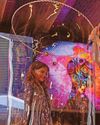
MANCHESTER SCIENCE FESTIVAL
From 18-27 October, shoppers at the Arndale shopping centre in Manchester, England, will face a giant spider.

Should musicians stop touring?
Multiple concerts travelling around the world have a big impact on the environment.
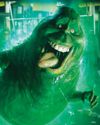
Are ghosts real?
Plenty of people believe in ghosts, but it's hard to find proof.

SMASH STEREOTYPES
In an extract from his prize-winning book, scientist and writer Adam Rutherford shows you how to use the power of science to fight racism. This chapter, titled Myth-Busting, is all about sport.

Animal awareness
What would it feel like to be another animal?
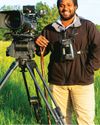
Hamza Yassin
Go behind the camera with a wildlife filmmaker.
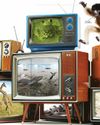
WILDLIFE WATCH
Ben Hoare goes on a safari from his sofa to discover how nature documentaries are made.

Big bum breakthrough
A team of researchers who found out that mammals can breathe through their bottoms have won a prize at the lg Nobel awards.
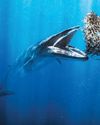
A jaw-dropping undersea snap
A photograph of a Bryde's whale feeding on a heart-shaped \"bait ball\" of sardines has won the Ocean Photographer of the Year contest.